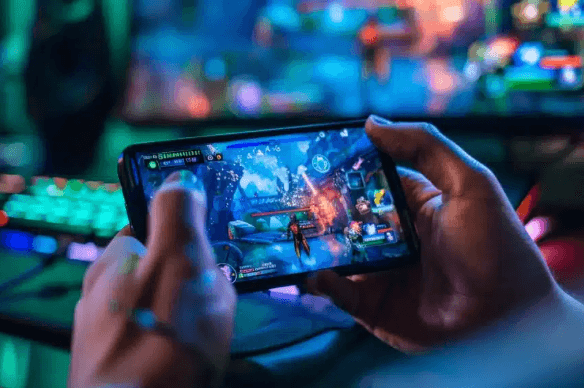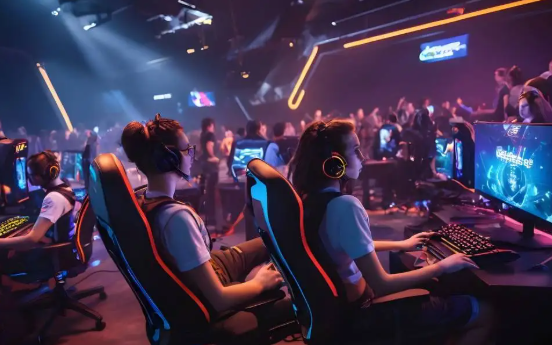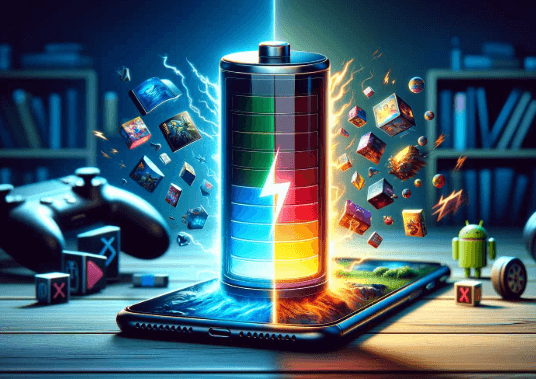Understanding Game Mechanics: The Heart of Interactive Gaming

In the ever-evolving world of interactive entertainment, game mechanics serve as the backbone of the player’s experience. Whether it’s the jump mechanics in a platformer, the battle system in a role-playing game, or the skill-based interactions in a competitive shooter, understanding game mechanics is essential to appreciating what makes games fun, engaging, and immersive. This article delves deep into the heart of interactive gaming by examining the crucial role game mechanics play in crafting the gaming experience.
1. Introduction to Game Mechanics
What are Game Mechanics?
Game mechanics are the fundamental systems and rules that govern how a game works. They define the interactions between the player and the game world, as well as how those interactions lead to outcomes. These mechanics include everything from the basic control systems (e.g., movement and combat) to complex systems like economies, character development, or skill progression. In short, game mechanics determine how players engage with a game, and they are the tools that allow players to experience the game’s narrative, challenges, and rewards.
See also: The Evolution and Impact of Multiplayer Online Games
The Importance of Game Mechanics in Gaming Experience
Without well-designed mechanics, even the most visually stunning games can fall flat. A game’s mechanics shape the player’s journey, influencing everything from how fun the game is to how meaningful their choices feel. Effective game mechanics keep players engaged, creating a sense of accomplishment, challenge, and immersion. They are what make games interactive and distinct from passive forms of entertainment like movies or television.
2. The Core Elements of Game Mechanics
Rules and Objectives
At the heart of any game is a set of rules and objectives. These define what players can and cannot do in the game world. The objectives often guide the player’s actions, giving them a purpose within the game. For instance, in a puzzle game, the player’s goal might be to solve a series of challenges, while in a combat game, the objective could be to defeat enemies or achieve a high score.
Challenges and Obstacles
A key component of game mechanics is the challenge the player faces. These obstacles, whether in the form of enemies, environmental hazards, or complex puzzles, are what give the game its difficulty and excitement. A well-designed challenge is one that feels rewarding to overcome and contributes to a sense of progression.
Player Actions and Interactions
Game mechanics are defined by the actions players can take and the systems with which they can interact. For example, in an action RPG, the player’s ability to attack, defend, and cast spells creates an engaging combat mechanic. Similarly, in open-world games, players can interact with the environment, NPCs, and other systems to alter the world around them. These interactions form the essence of gameplay.
3. Types of Game Mechanics
Direct vs. Indirect Mechanics
Game mechanics can be divided into direct and indirect mechanics. Direct mechanics are those that have a clear, immediate impact on gameplay. For example, in a fighting game, a punch or a block directly impacts the health of the opponent. Indirect mechanics, on the other hand, have more subtle effects. For instance, in a simulation game, decisions made by the player may not immediately show results but can influence the game world over time, such as changes in the economy or society.
Progression Mechanics
Progression mechanics are integral in many games, especially RPGs. These mechanics control how a player’s character grows or evolves throughout the game. Progression systems often involve gaining experience points, leveling up, acquiring better equipment, or unlocking new abilities. They provide a sense of achievement and keep players invested in the long-term goals of the game.
Combat and Puzzle Mechanics
Combat mechanics refer to the systems that govern fighting or conflict resolution within a game. These may include attacks, defenses, weaponry, and even magic. Puzzle mechanics, often found in adventure or puzzle games, focus on problem-solving and brainteasers. Both of these mechanics are essential in creating gameplay variety and keeping the player mentally engaged.
4. How Game Mechanics Influence Player Behavior
Motivation and Reward Systems
Game mechanics often revolve around reward systems that motivate the player to keep playing. These rewards can range from tangible items, such as in-game currency or new abilities, to more abstract rewards like a sense of accomplishment or story progression. Properly designed reward systems can keep players invested in the game and encourage specific behaviors, such as exploration or mastering difficult skills.
Exploration vs. Linear Gameplay
Game mechanics can either promote exploration or create a more linear experience. Open-world games, such as “The Legend of Zelda: Breath of the Wild,” reward players for exploring the game world and discovering hidden secrets. On the other hand, linear games like “Uncharted” provide a more structured experience where players progress through set levels or story beats.
Psychological Impact of Game Mechanics
Game mechanics can influence player psychology in profound ways. Mechanics that promote a sense of accomplishment, mastery, and progression can lead to positive emotions, such as pride and satisfaction. However, poorly balanced mechanics can cause frustration or a sense of helplessness. Developers must be mindful of these psychological effects to ensure that players remain motivated without feeling overwhelmed.
5. Game Mechanics in Different Genres
Role-Playing Games (RPGs)
RPGs rely heavily on complex game mechanics such as character progression, skill trees, combat systems, and dialogue choices. These mechanics allow players to immerse themselves in the world and develop a personal connection with their characters. Games like “Skyrim” and “Final Fantasy” showcase how RPG mechanics can create a rich, evolving narrative.
First-Person Shooters (FPS)
In FPS games, mechanics center around precise aiming, shooting, and movement. These games rely on fast reflexes and strategic thinking, with mechanics often including health regeneration, weapon loadouts, and multiplayer dynamics. Games like “Call of Duty” or “Overwatch” emphasize the need for skill and coordination within a competitive environment.
Strategy and Simulation Games
Strategy games, such as “Civilization” or “Starcraft,” involve mechanics that require players to think ahead, manage resources, and plan their moves carefully. Simulation games, like “The Sims” or “SimCity,” allow players to control virtual environments and systems, requiring them to manage multiple variables simultaneously.
6. The Evolution of Game Mechanics Over Time
Early Gaming Mechanics: Simple Yet Effective
Early video games, such as “Pong” or “Space Invaders,” had simple mechanics that revolved around one or two core actions—move and shoot. Despite their simplicity, these mechanics formed the foundation of interactive gaming, proving that even minimal systems could provide fun and engaging experiences.
Advancements in Mechanics with Technology
As gaming technology advanced, so did the complexity of game mechanics. The introduction of 3D graphics, artificial intelligence, and networked multiplayer allowed for more intricate and dynamic systems. Modern games often feature highly sophisticated mechanics that support vast, open worlds, deep storylines, and multiplayer functionality.
7. The Role of Feedback in Game Mechanics
Visual and Audio Feedback
Feedback is essential to how players understand the impact of their actions in a game. Visual feedback could include things like damage numbers, health bars, or flashing lights to indicate success or failure. Audio cues, such as sound effects when an enemy is defeated, provide additional layers of information that help players react in real-time.
Game Progression and Feedback Loops
Feedback loops are mechanisms that encourage players to continue progressing by rewarding them with new challenges, abilities, or narrative developments. Positive feedback loops, like leveling up or achieving new milestones, reinforce player behavior and maintain engagement.
8. How Developers Create and Balance Game Mechanics
Iteration and Testing in Game Design
Creating and balancing game mechanics involves extensive iteration and testing. Developers often run numerous playtests, adjusting the mechanics based on player feedback and behavior. This process helps identify what works and what doesn’t, ensuring a smooth and enjoyable player experience.
Balancing Difficulty and Accessibility
Balancing difficulty is one of the most challenging aspects of game design. Developers must ensure that game mechanics are challenging yet accessible to players of all skill levels. Games often provide difficulty options, adaptive systems, or tutorials to ensure that players can enjoy the experience regardless of their expertise.
9. The Intersection of Game Mechanics and Storytelling
Narrative-Driven Mechanics
In some games, mechanics are directly tied to the narrative. For example, in “The Last of Us,” players’ interactions with the environment and combat mechanics play a crucial role in telling the story. Game mechanics can enhance storytelling by allowing players to actively participate in the narrative.
Immersion Through Mechanics: Case Studies
In games like “Red Dead Redemption 2” or “The Witcher 3,” the mechanics of horse-riding, combat, and exploration all work together to create a deeply immersive world. These mechanics not only drive gameplay but also serve to immerse players in the fictional universe.
10. Complex Game Mechanics and Their Appeal
Depth vs. Accessibility
While some games focus on simple mechanics to appeal to a broad audience, others prioritize depth, offering complex systems that reward mastery. Examples like “Dark Souls” or “Dota 2” are famous for their intricate mechanics that cater to dedicated players willing to invest significant time and effort.
Examples of Games with Complex Mechanics
“Kerbal Space Program,” with its realistic physics and space exploration mechanics, offers a deep, complex experience that appeals to players interested in mastering its systems. Similarly, “Factorio” presents intricate mechanics for building and automating factories, challenging players with both strategic and logistical thinking.
11. The Impact of Game Mechanics on Multiplayer Games
Cooperative Mechanics vs. Competitive Mechanics
Multiplayer games often feature cooperative or competitive mechanics. Cooperative mechanics require players to work together to achieve a common goal, while competitive mechanics pit players against each other. Games like “Overcooked” or “World of Warcraft” showcase the strength of cooperative mechanics, while games like “Fortnite” and “Apex Legends” highlight the thrill of competition.
The Role of Game Mechanics in Esports
In the world of esports, game mechanics are key to creating fair, balanced, and engaging competitions. Developers work closely with professional players to refine mechanics and ensure that the games remain exciting for both participants and viewers.
12. The Ethical Side of Game Mechanics
Monetization and Fairness
Modern games often include microtransactions, which allow players to purchase in-game items or advantages. While some see this as a fair way to support game development, others argue that it leads to a “pay-to-win” scenario, where players with money have an unfair advantage over others.
Microtransactions and Player Empowerment
Despite criticisms, some argue that microtransactions can enhance the player experience, offering customization options or convenience without affecting gameplay balance. Developers must carefully consider how they implement these mechanics to avoid alienating their player base.
13. Future Trends in Game Mechanics
AI and Dynamic Game Mechanics
The future of game mechanics will likely see further integration of artificial intelligence. AI could allow for more dynamic, reactive gameplay that adapts to the player’s actions, offering a unique experience every time they play.
Virtual Reality and the Next Generation of Mechanics
With the advent of virtual reality (VR), game mechanics are set to evolve in exciting ways. VR allows players to interact with the game world using physical movements, opening up new possibilities for immersion and gameplay.
14. Why Game Mechanics Are Essential for the Future of Gaming
The Role of Innovation in Game Design
Game mechanics drive innovation in the industry, pushing boundaries in terms of what players can experience. As technology advances, developers will continue to experiment with new mechanics, creating more immersive, personalized, and exciting games.
Player Expectations and New Experiences
As the gaming community becomes more diverse and expectations rise, the demand for new and innovative mechanics will continue to grow. Players now expect not only cutting-edge graphics but also deeper, more meaningful interactions with game worlds.
15. Conclusion
The Enduring Significance of Game Mechanics in Interactive Entertainment
In conclusion, game mechanics are the foundation of interactive gaming. They define how players interact with games, shape their experiences, and contribute to the lasting appeal of a game. Whether simple or complex, well-designed mechanics are essential to creating engaging, fun, and memorable gaming experiences.
Frequently Asked Questions (FAQs)
1. What are game mechanics in video games?
Game mechanics are the systems and rules that define how players interact with a game, determining how actions lead to outcomes within the game world.
2. How do game mechanics impact the player experience?
Game mechanics shape the way players interact with a game, influencing their emotions, motivations, and sense of accomplishment, making them central to the overall gaming experience.
3. What is the difference between direct and indirect game mechanics?
Direct mechanics have an immediate impact on gameplay (e.g., attacking or jumping), while indirect mechanics influence the game more subtly over time (e.g., resource management or character progression).
4. How do game mechanics differ across game genres?
Different genres focus on different mechanics. For example, RPGs emphasize character progression, while FPS games prioritize combat mechanics, and strategy games involve managing resources and making strategic decisions.
5. What role do game mechanics play in multiplayer games?
In multiplayer games, mechanics often dictate whether players work together or compete, and they are crucial in shaping the dynamics of the game, especially in esports.
6. What are some future trends in game mechanics?
The integration of artificial intelligence, virtual reality, and dynamic gameplay systems are among the exciting trends that will shape the future of game mechanics, offering more immersive and adaptive player experiences.



